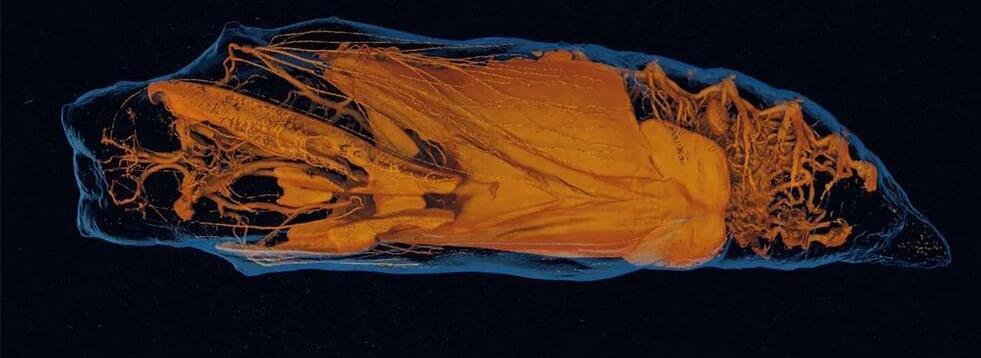
Get the latest international news and world events from around the world.


Researchers discover mysterious interstellar radio signal reaching Earth: “Extraordinary”
Mysterious radio wave pulses from deep in space have been hitting Earth for decades, but the scientists who recently discovered them have no concrete explanation for the origin of the signals.
For 35 years, the strange blasts of energy in varying levels of brightness have occurred like clockwork approximately every 20 minutes, sometimes lasting for five minute intervals. That’s what Curtin University astronomers from the International Centre for Radio Astronomy Research (ICRAR) concluded in research published last week in the journal Nature.
The discovery of the signal, which researchers named GPMJ1839-10, has the scientists baffled. Believed to be coming from around 15,000 light years away from Earth, the signal has been occurring at intervals and for a period of time previously thought to be impossible.

This new tool could protect your pictures from AI manipulation
PhotoGuard, created by researchers at MIT, alters photos in ways that are imperceptible to us but stops AI systems from tinkering with them.
Remember that selfie you posted last week? There’s currently nothing stopping someone taking it and editing it using powerful generative AI systems. Even worse, thanks to the sophistication of these systems, it might be impossible to prove that the resulting image is fake.
The good news is that a new tool, created by researchers at MIT, could prevent this.

How a start-up built the search engine of the future — and then died
A couple of ex-Googlers set out to create the search engine of the future. They built something faster, simpler, and ad-free. So how come you’ve never heard of Neeva?
Sridhar Ramaswamy didn’t leave Google to build another search engine. At least not at first. At the close of his 15-year tenure at Google, Ramaswamy was running the company’s entire advertising division, overseeing more than 10,000 people — he knew better than most exactly how much work it took to do search well.
You almost can’t overstate how dominant Google is in search. Most studies put Google at about 90 percent of the global search market, and that number has been steadily climbing for 20 years. Google is the default search… More.
Neeva was faster, simpler, and ad-free. But making something better than Google isn’t enough to beat Google.

AI Chatbots Are The New Job Interviewers
A few examples: McDonald’s chatbot recruiter “Olivia” cleared Claypool for an in-person interview, but then failed to schedule it because of technical issues. A Wendy’s bot managed to schedule her for an in-person interview but it was for a job she couldn’t do. Then a Hardees chatbot sent her to interview with a store manager who was on leave — hardly a seamless recruiting strategy.
“I showed up at Hardees and they were kind of surprised. The crew operating the restaurant had no idea what to do with me or how to help me,” Claypool, who ultimately took a job elsewhere, told Forbes. “It seemed like a more complicated thing than it had to be,” she said. (McDonald’s and Hardees didn’t respond to a comment request. A Wendy’s spokesperson told Forbes the bot creates “hiring efficiencies,” adding “innovation is our DNA.”)

Micron Announces “Second Generation” HBM3 Memory For Generative AI Workloads
Since the first High-Bandwidth Memory (HBM) stacks were introduced in 2013, these stacked memory chiplets have carved out a new, high-performance niche for DRAM in the memory hierarchy. The first products to incorporate HBM started to appear in 2015. You will now find HBM stacks in high-end CPUs, GPUs, and FPGAs, where performance matters more than cost to the end customer. Although HBM is not as fast as SRAM, it is faster than bulk DDR memory, and it’s getting even faster. Micron has just announced what the company is calling a “second-generation” (Gen 2) HBM3 DRAM that adheres to the semiconductor industry’s “bigger, better, faster” mantra. Because it integrates higher-density DRAM die, Micron’s HBM3 Gen 2 can be 50 percent bigger (higher capacity) than existing HBM3 DRAM available from other memory vendors, with 2.5x better performance/power ratings and 50 percent faster speed (1.2Tbytes/second). That’s the DRAM industry’s equivalent of a trifecta.
HBM is akin to a chiplet skyscraper. Each HBM stack consists of a logic die, which contains a system interface and DRAM control, with multiple DRAM die stacked on top of the logic die. The entire stack is designed to be incorporated into an IC package along with larger semiconductor die and other, smaller chiplets. You’ll find earlier HBM generations incorporated into server CPUs from AMD and Intel, FPGAs from AMD and Intel, and GPUs from AMD, Intel, and Nvidia. The most recent announcement of a GPU containing HBM is AMD’s MI300X GPU, announced by the company’s CEO Lisa Su in June. (See “AMD Hops On The Generative AI Bandwagon With Instinct MI300X.”) Intel previously announced HBM use in the company’s Data Center GPU Max Series, the data center GPU formerly known as Ponte Vecchio. Nvidia’s H100 Hopper GPU also incorporates HBM memory stacks.
Micron has now entered the HBM3 race with what the company is calling a “second-generation” HBM3 design, because Micron’s version of an HBM3 stack is arriving about a year after competitive products, but is based on a faster, denser, more advanced semiconductor process node. The DRAM die in this Micron HBM3 stack is being fabricated with the company’s 1β process technology, which the company announced last year. During that announcement, the company claimed that the 1β process increased DRAM bit density by 35 percent and decreased power consumption by 15 percent, when compared to the company’s 1α node. At the time, Micron announced plans to use its 1β process node for manufacturing DDR5 and LPDDR5 DRAM. The company has now stated that they will use the same process node for manufacturing DRAM die for its HBM3 stacks.

70% Of Generative AI Startups Rely On Google Cloud, AI Capabilities
Alphabet’s Q2 2023 earnings call highlighted the growing adoption of generative AI across the company’s cloud and product offerings.
CEO Sundar Pichai emphasized how over 70% of generative AI startups rely on Google’s cloud infrastructure and AI capabilities. This shows the traction for next-gen technology among emerging companies looking to build new services powered by Google Bard and other models.
“Our AI-optimized infrastructure is a leading platform for training and serving generative AI models. More than 70% of gen AI unicorns are Google Cloud customers, including Cohere, Jasper, Typeface, and many more,” he said.

Hypermodal AI Converges Predictive, Causal And Generative AI
In software application development environments, the consensus is gravitating towards the use of AI as a helping and testing mechanism, rather than it being wholly offered the chance to create software code in and of itself. The concept here is that if so-called citizen developer business laypeople start creating code with software robots, they will never be able to wield the customization power (and ability to cover security risks) that hard-core software developers have.
As we now grow with AI and start to become more assured in terms of where its impact should be felt, we may now logically look to the whole spectrum of automation that it offers. This involves the concept of so-called hypermodal AI i.e. intelligence capable of working in different ‘modes’, some of which will predict, some of which will help determine and some of which will generate.
Today describing itself as unified observability and security platform company (IT vendors are fond of changing their opening ‘elevator sell’ line every few years), Dynatrace has now expanded its Davis AI engine to create hypermodal AI that converges fact-based predictive AI, with causal AI insights with new generative AI capabilities.

The Future Of Manufacturing: Generative AI And Beyond
The manufacturing and industrial sector is currently undergoing a transformation with the advent of generative AI, the metaverse and web3 technology. Organizations can now use cutting-edge tools and solutions to streamline operations, increase efficiency, and enhance the customer experience.
Let’s explore the ways in which the metaverse, AI and web3 technology are transforming manufacturing and industrial organizations and what the future of this sector may look like as a result.
The integration of metaverse technology into the manufacturing sector has the potential to revolutionize the way companies operate, providing new opportunities for optimization, innovation, and growth.
